Exploring Australian students’ strengths and weaknesses in maths and science
Last week the results for the IEA’s Trends in International Mathematics and Science Study (TIMSS) were released, showing an improvement in Australia’s results for Year 4 science, and for Year 4 and Year 8 mathematics.
TIMSS is based on a research model that uses curriculum, in broad terms, as its foundation. TIMSS has research questions associated with three levels of curriculum:
- The intended curriculum – defined as the curriculum as specified at national or system level. What are mathematics and science students around the world expected to learn? How do countries vary in their intended goals, and what characteristics of education systems, schools and students influence the development of these goals? How should the education system be organised to facilitate this learning?
- The implemented curriculum – defined as the curriculum as interpreted and delivered by classroom teachers. What is actually taught in classrooms? Who teaches it? What opportunities are provided for students to learn mathematics and science? How do instructional practices vary among countries and what factors influence these variations?
- The attained curriculum – which is that part of the curriculum that is learnt by students, as demonstrated by their attitudes and achievements. What mathematics and science concepts, processes and attitudes have students learnt? What factors are linked to students’ opportunity to learn, and how do these factors influence students’ achievements?
To respond correctly to TIMSS test items, students need to be familiar with the mathematics or science content of the items. To assess this, the TIMSS mathematics and science frameworks have a content dimension, which specifies the subject matter to be assessed.
Just as importantly, students need to be able to use particular cognitive skills – the thinking processes and sets of behaviours expected of them as they engage with the content of the assessment. Items were designed therefore not only to assess the content dimension but also the cognitive dimension.
Cognitive domains
The TIMSS 2019 assessment framework presents detailed descriptions of the skills and abilities that make up the cognitive domains and are assessed in conjunction with the content. The student behaviours encompassed by the cognitive dimension have been classified into three domains within the assessment framework. The three domains can be described as follows:
- Knowing – the facts, concepts and procedures students need to know
- Applying – the ability of students to apply knowledge and conceptual understanding to solve problems or answer questions
- Reasoning – goes beyond the solution of routine problems to encompass unfamiliar situations, complex contexts and multi-step problems.
Content domains - mathematics
The TIMSS 2019 mathematics framework defines three content domains for Year 4 students (Number; Measurement and geometry; Data) and four content domains for Year 8 students (Number; Algebra; Geometry; Data and probability). Each of these content domains has several topic areas. For example, in Year 4, Number includes whole numbers; expressions, simple equations and relationships; and fractions and decimals, but in Year 8, Number includes integers; fractions and decimals; and ratio, proportion and percentages. These topic areas are shown in Table 1.
Table 1. TIMSS Year 4 and Year 8 content domains in mathematics
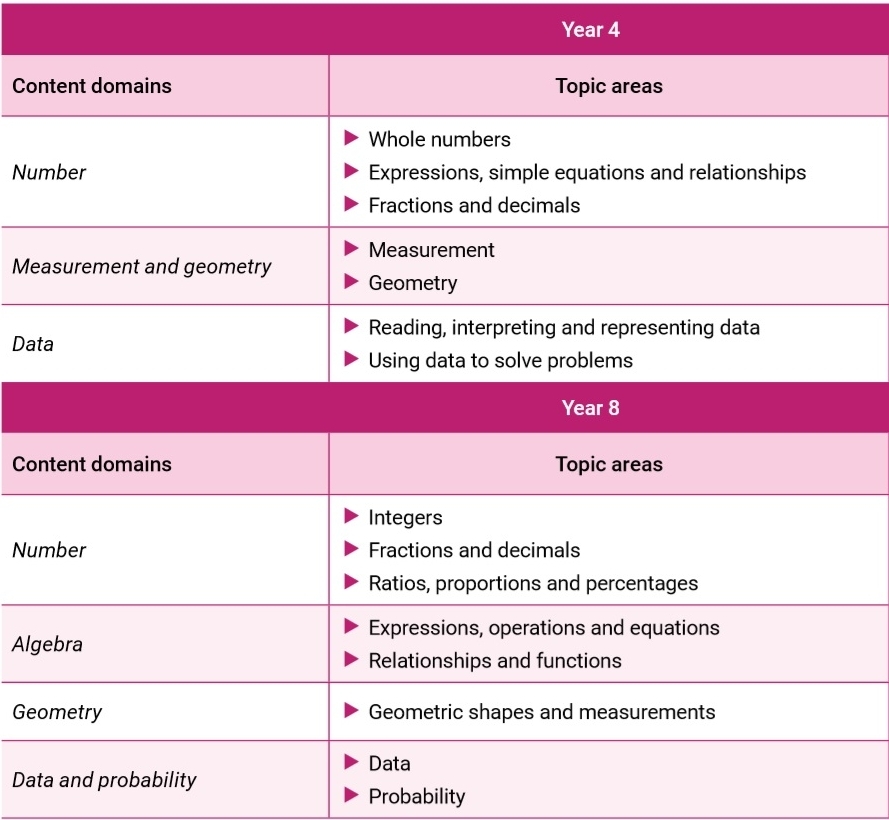
Test items are written to address both cognitive and content dimensions. In Example 1, Year 4 students are presented with a line graph of water level in a dam, and they are asked to read data from this graph. The content domain is Data and the cognitive domain is Knowing.
Example 1. Year 4 mathematics item
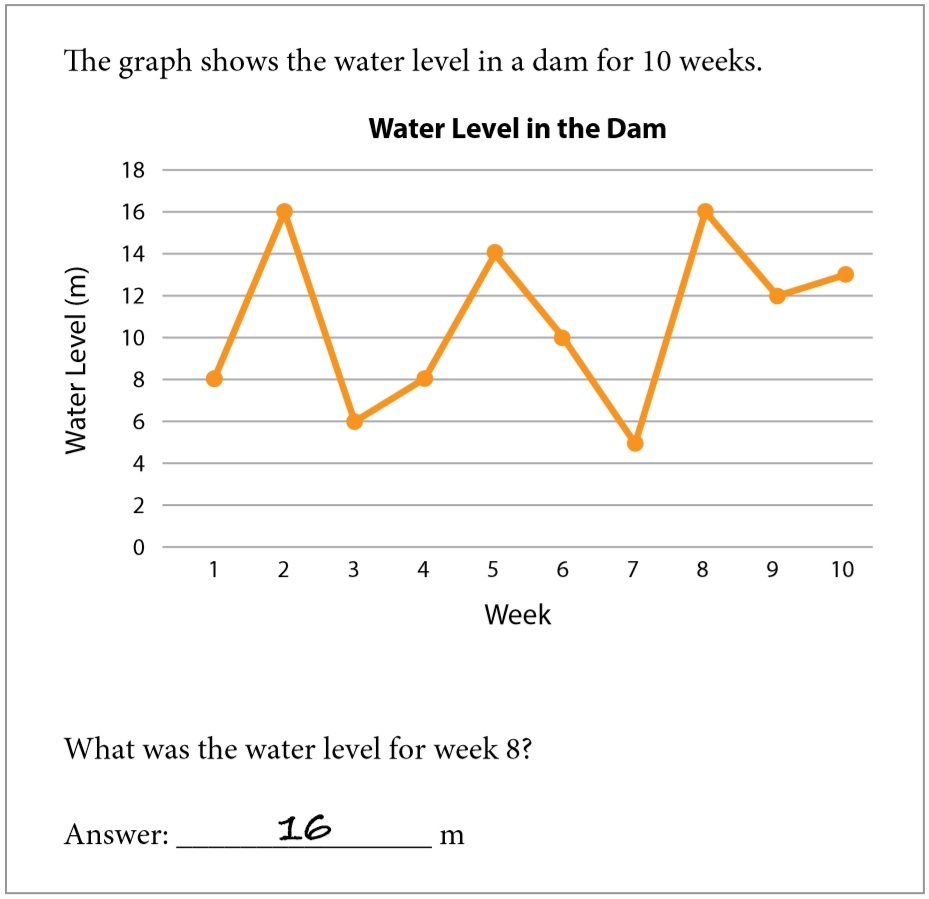
Internationally, on average, 68 per cent of Year 4 students answered this correctly. In Australia, 84 per cent of students answered correctly, which was significantly higher than the international average.
Example 2. Year 8 mathematics item
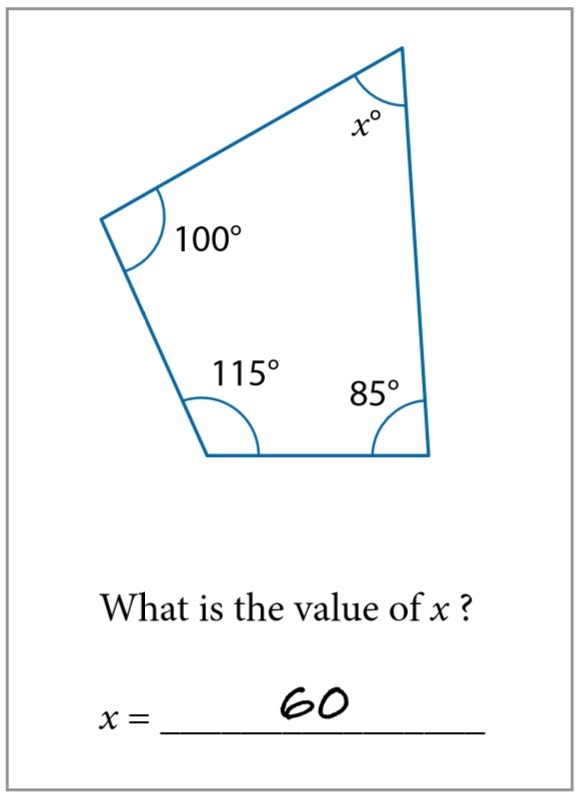
In Example 2, students are asked to determine the value of an angle in an irregular quadrilateral, given the values of the other angles. Internationally 56 per cent of students, on average, answered this correctly. In Australia, 61 per cent of students answered correctly, which was significantly higher than the international average.
Figure 1 shows the relative mean achievement for Australian students across the mathematics content and cognitive domains (comparing the domain score against the overall score).
- Year 4 students were stronger in Data, but weaker in Number. They were stronger in Reasoning, but weaker in Knowing.
- Year 8 students were stronger in Number, and Data and probability, but weaker in Algebra and Geometry. They were stronger in Applying, but weaker in Knowing and Reasoning.
Figure 1. Relative mean achievement across the mathematics content domains (top) and cognitive domains (bottom) for Australian students
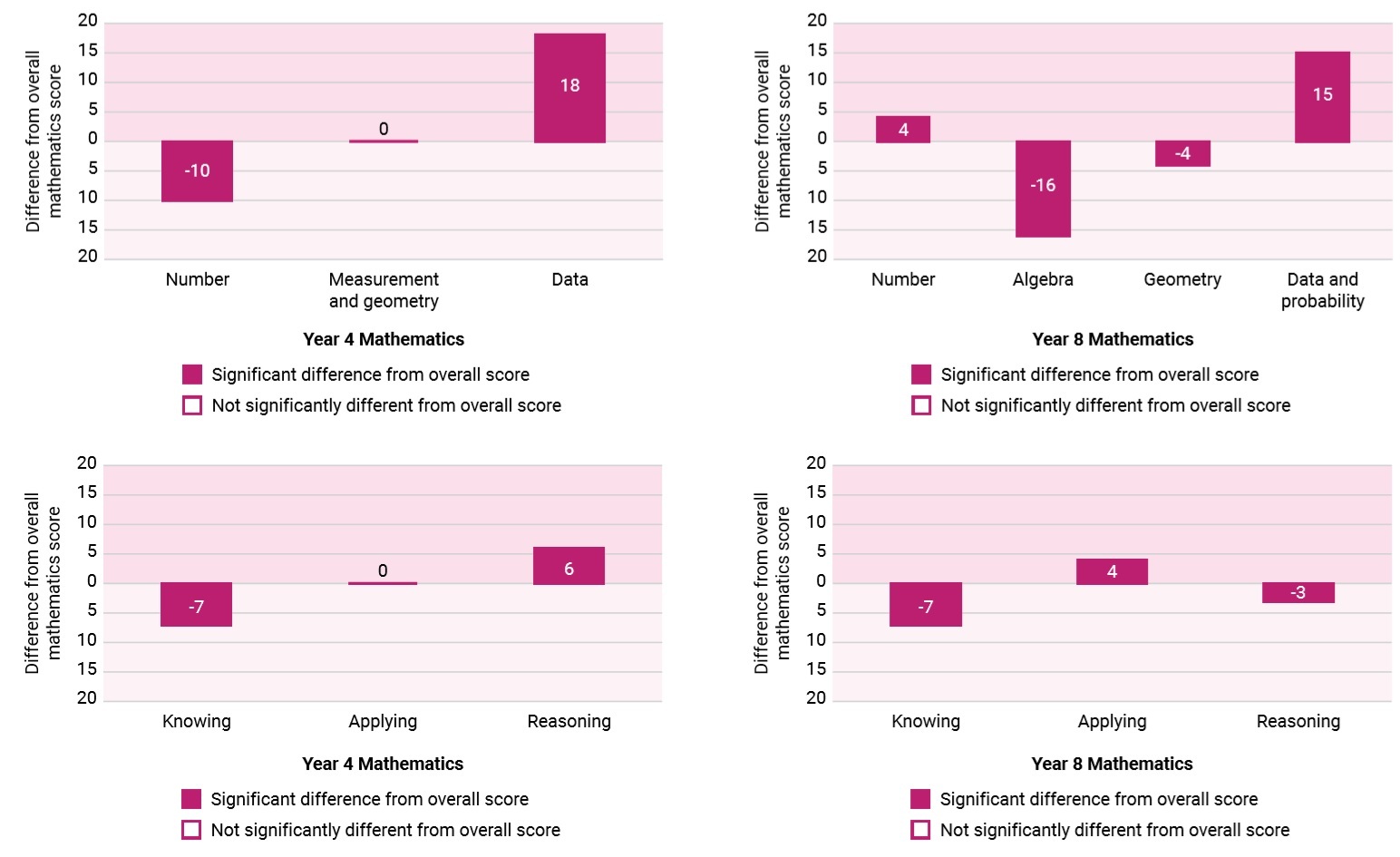
Content domains - science
The TIMSS 2019 science framework defines three content domains for Year 4 students (Life science, Physical science; Earth science) and four content domains (Biology; Chemistry; Physics; Earth science) for Year 8 students. Each of these content domains has several topic areas. For example, the domain Life science includes characteristics and life processes of organisms; life cycles, reproduction and heredity; organisms, environment and their interactions; ecosystems; and human health. These topic areas are shown in Table 2.
Table 2. TIMSS Year 4 and Year 8 content domains in science
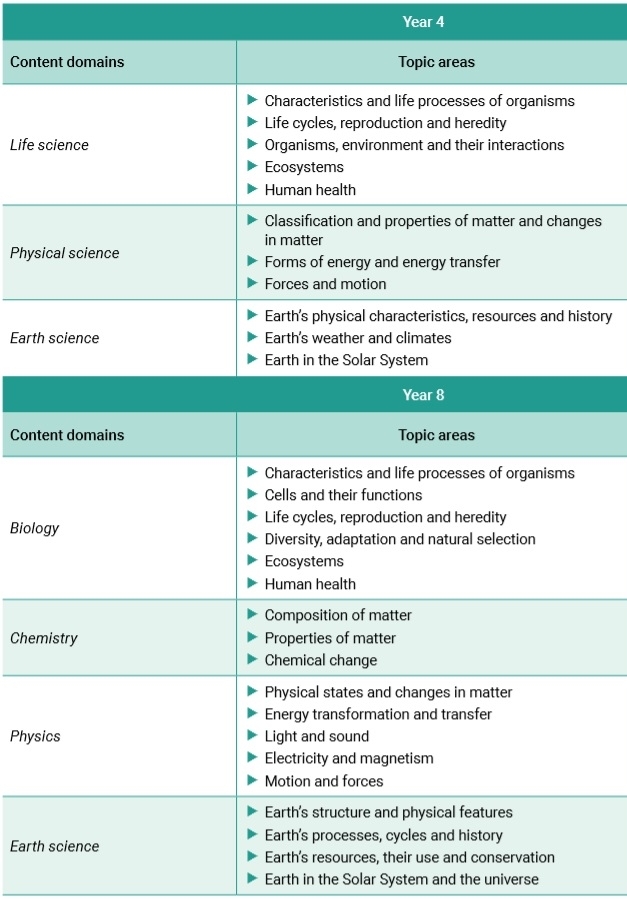
Example 3. Year 4 science item
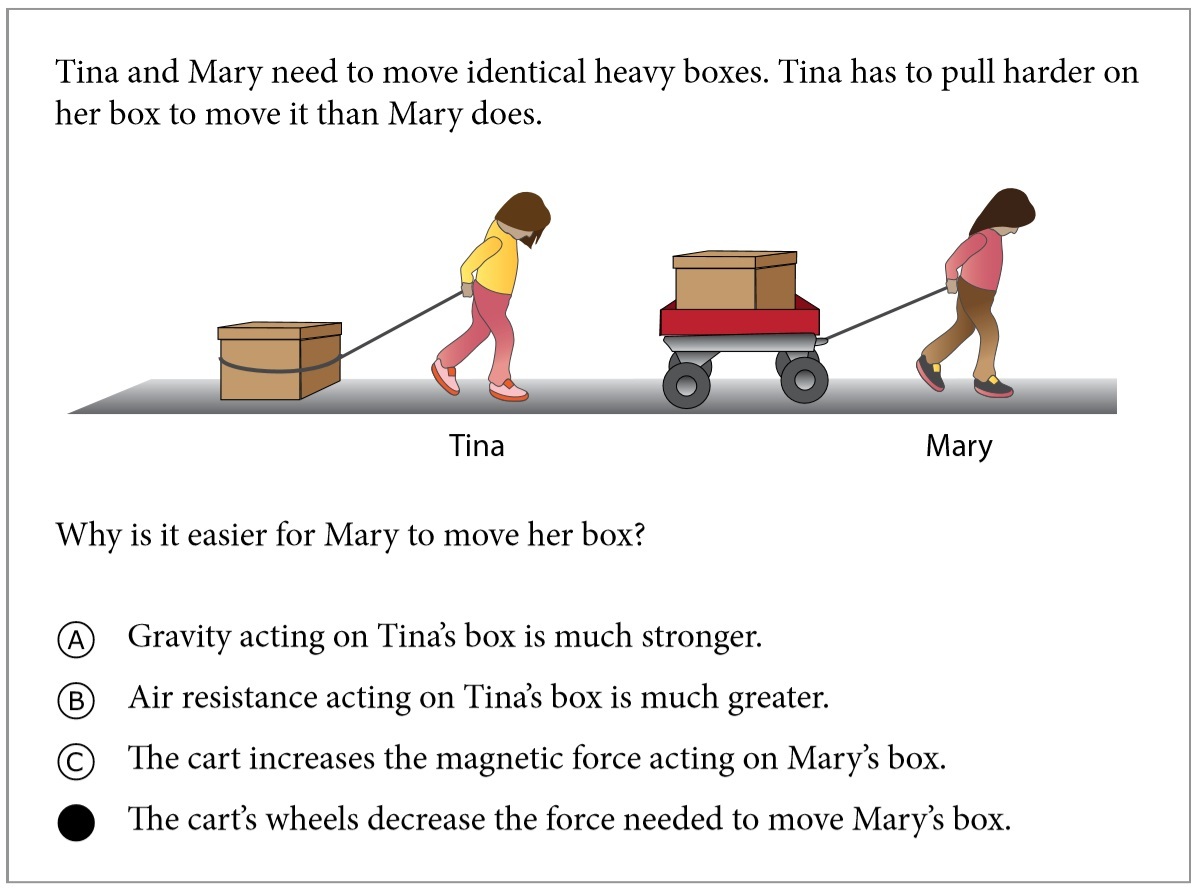
In Example 3, students are asked to provide the best explanation for why a box on a cart is easier to pull than a box resting directly on the floor. This item was answered correcty by 66 per cent of Year 4 students internationally, and by 76 per cent of Australian students, which was significtly higher than the international average.
Example 4. Year 8 science item
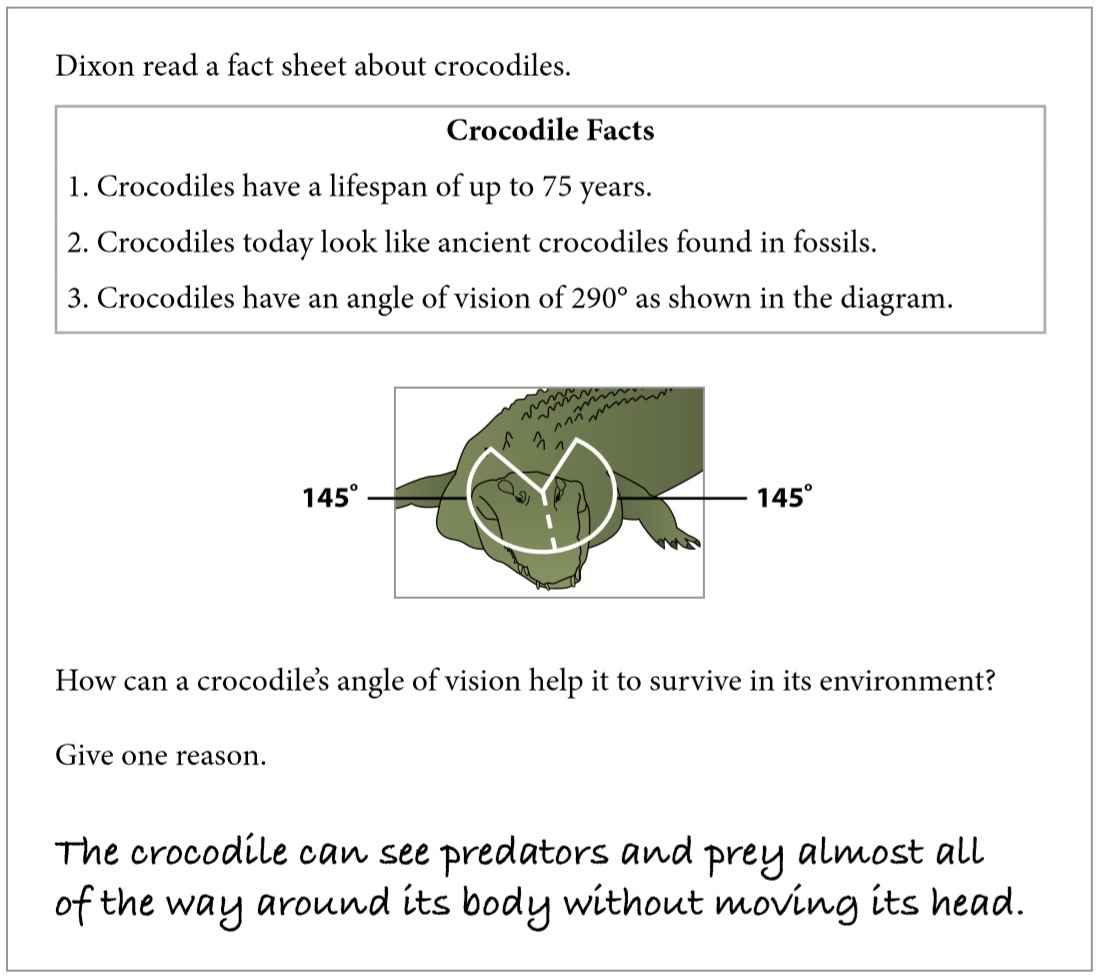
Example 4 asks students to give a reason for how a crocodile’s angle of vision helps it survive in the environment. Internationally, 55 per cent of students, on average, answered this correctly. A significantly higher 68 per cent of Australian students answered this correctly.
Figure 2 shows the relative mean achievement for Australian students across the science content and cognitive domains (comparing the domain score against the overall score).
- Year 4 students were stronger in Life science, but weaker in Physical science, and Earth science. They were stronger in Knowing, and Reasoning, but weaker in Applying.
- Year 8 students were stronger in Earth science, but weaker in Chemistry. They were stronger in Reasoning and Applying, but weaker in Knowing.
Figure 2. Relative mean achievement across the science content domains (top) and cognitive domains (bottom) for Australian students
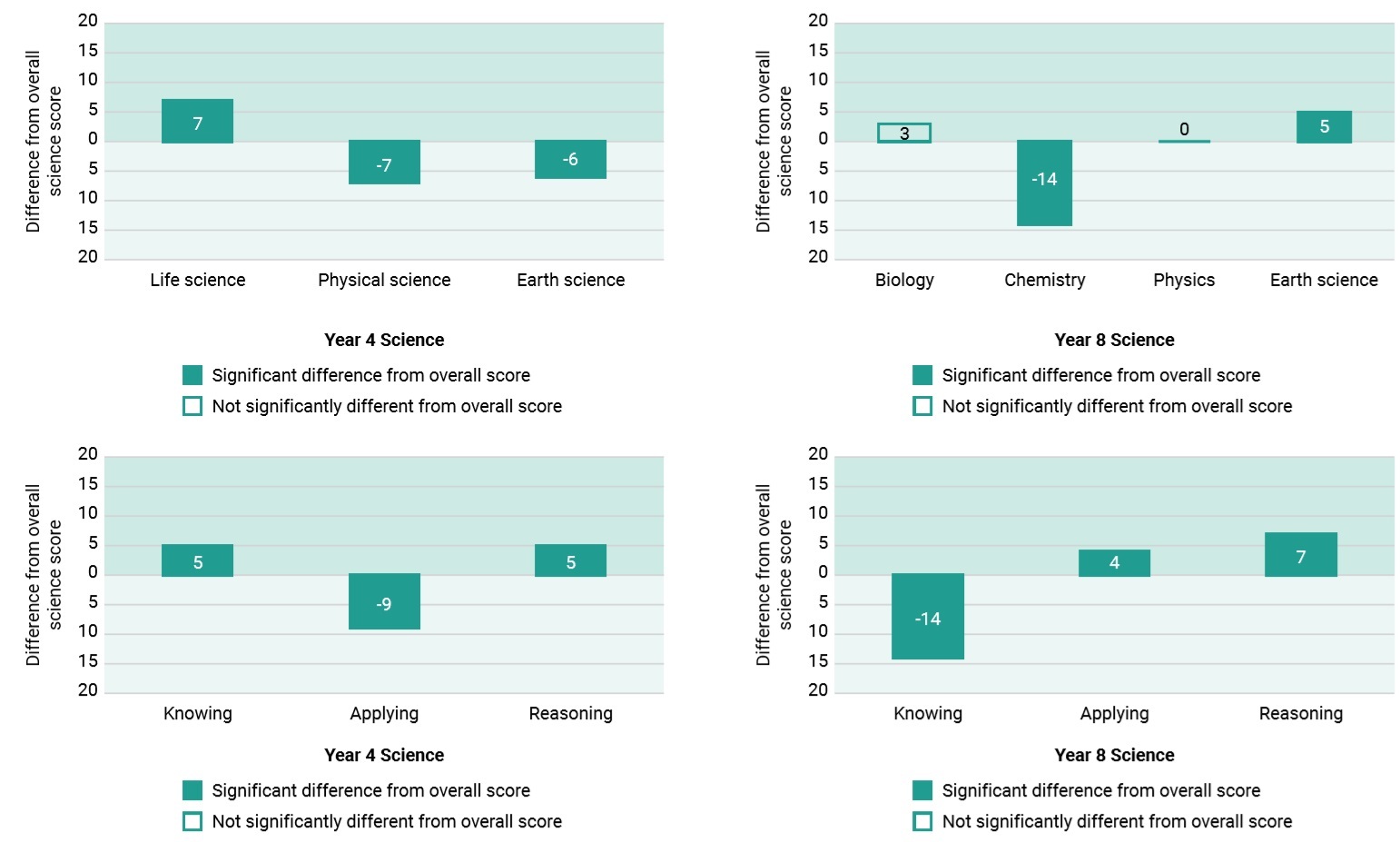
Informing teaching and learning
These findings can help unpack the ‘big picture’ of the TIMSS achievement results and signal what Australian schools should focus on in order to improve students’ general understanding of mathematics and science.
Identifying the content and cognitive domains in which Australian students fall short, and then targeting teaching at these areas, should help achieve better results. Teachers have a key role here, and the findings from TIMSS 2019 provides broad information for them to be aware of general weaknesses at the national level.



